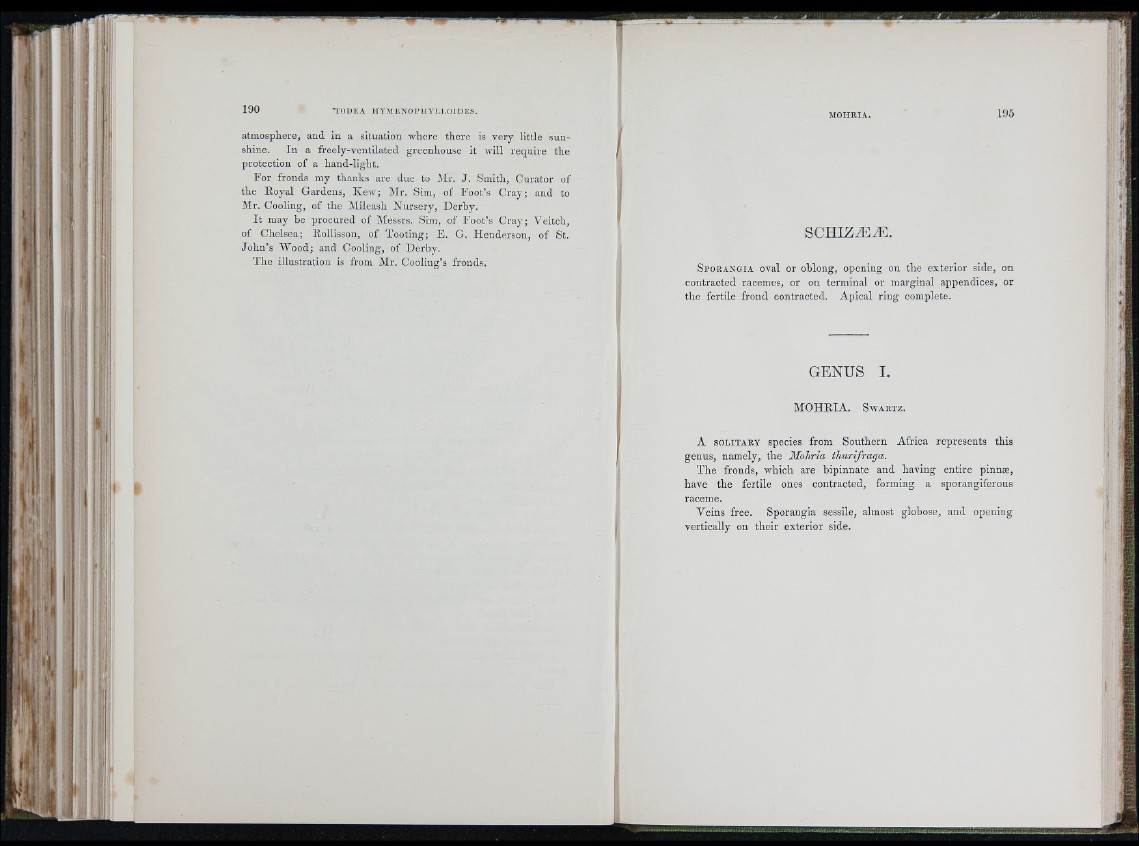
i l
atmosphere, an d in a situation where th e re is very little su n shine.
I n a free ly-ventilated greenhouse it will req u ire th e
protection of a h and-light.
F o r fronds my th anks are due to IMr. J . Smith, Curator of
th e E o y a l Gardens, K ew ; Mr. Sim, of F o o t’s C ra y ; and to
Mr. Cooling, of th e Mileash N u rs e ry , Derby.
I t may be p ro cu re d of Messrs. Sim, of F o o t’s C ra y ; Ve itch ,
of Che lsea; Ilollisson, of T oo tin g ; F . G. H en d e rso n , of St.
J o h n ’s W o o d ; and Cooling, of De rb y .
T h e illustration is from Mr. Cooling’s fronds.
S C H I Z / J 3 ^ i .
S p o r a n g ia oval or oblong, opening on th e e x te rio r side, on
co ntracted racemes, or on te rm in a l or marginal appendices, or
the fertile frond contracted. A p ic a l rin g complete.
GENUS I.
M O H R IA . S w a r t z .
A SOLITARY species from S o u th e rn A frica rep re sen ts this
genus, namely, the Mohria th u rifra g a .
T h e fronds, which are b ip in n a te and h av in g en tire pinme,
have the fertile ones contracted, forming a sporangiferous
raceme.
Ve in s free. Sporangia sessile, almost globose, and opening
vertically on th e ir exterior side.